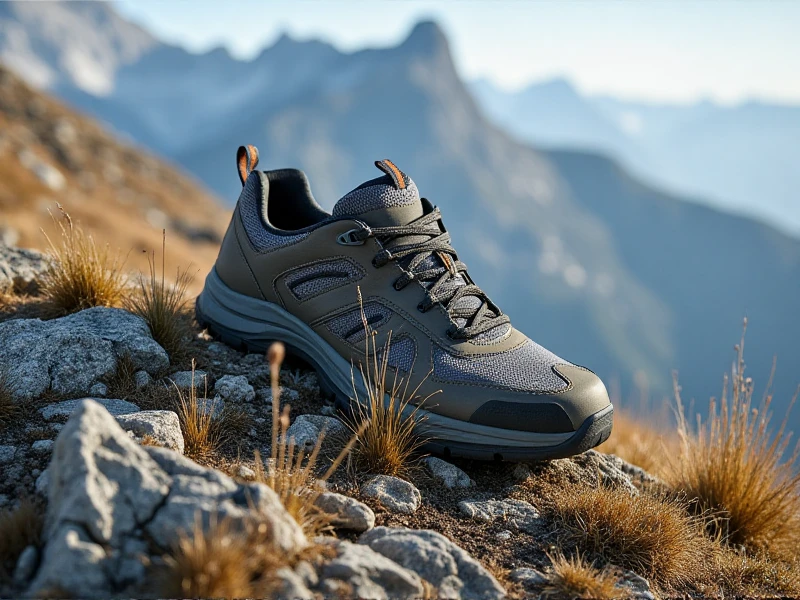The Ultimate Guide to Choosing the Best Women's Hiking Shoes
2025-06-01

You're halfway up the trail, breathing in crisp mountain air, when that familiar twinge starts – your toes are cramped, your heel rubs, and your arch feels unsupported. Sound familiar? It’s a scenario too many women face all because of ill-fitting women's hiking shoes. Choosing the right pair isn't just about comfort; it's about unlocking adventure, confidence, and safety on your outdoor journeys. This guide cuts through the noise, giving you the essential know-how to find your ideal pair.
Understanding Your Feet: Why "Women's" Matters
Women's feet are distinct – generally narrower in the heel, wider in the forefoot, and built with a different muscle-to-fat ratio compared to men's. "Unisex" or modified men's hiking boots often neglect these nuances, leading to blisters and instability. Investing in genuinely designed women's hiking shoes is crucial. Manufacturers tailor the last (the foot-shaped mold) specifically for women's anatomy, ensuring:
Narrower Heel & Wider Toe Box: Prevents slippage and accommodates natural toe splay.
Heightened Arch Support: Addresses women's generally higher arches relative to their instep height.
Gender-Specific Cushioning: Accounts for differences in weight distribution and impact needs.
Sleeker Proportions: Offers a better overall fit without unnecessary bulk.
Key Features to Prioritize in Women's Hiking Shoes
Beyond fit, scrutinize these core functionalities:
1. Support & Stability (Ankle Collar & Midsole):
Height: Low-cut (trail shoes) for easy trails/fast hiking. Mid-cut (most versatile) offers ankle support on uneven terrain. High-cut (boots) for heavy loads/off-trail scrambles.
Stiffness: A supportive midsole prevents fatigue on rocky paths. Look for materials like EVA (softer) or polyurethane (firmer, longer-lasting).
2. Traction (Outsole):
Lugs: Deep, multi-directional lugs bite aggressively into mud, loose dirt, and rock. Vibram® Megagrip or proprietary rubber compounds are top tiers offering reliable grip.
Flexibility: Needs to match the terrain – firmer for rocky stability, slightly softer for comfort on trails.
3. Protection (Toe Cap & Upper):
Protect toes from bumps and scrapes with a durable synthetic or rubber toe bumper.
Waterproofness: Essential for damp/muddy conditions? Look for breathable membranes like GORE-TEX®. For dry, warm trails? Non-waterproof, mesh uppers enhance airflow and speed drying ([Image suggestion: Zoom in on a shoe showing the mesh upper and toe bumper]).
4. Materials Matter (Upper):
Leather: Durable, naturally water-resistant, but heavier.
Synthetic (Nylon/Polyester): Lightweight, quick-drying, more breathable, often uses recycled materials.
Mesh: Maximizes ventilation but offers minimal protection. Ideal for warm weather/day hikes.
Matching the Shoe to Your Hike (and Your Style!)
Don’t buy for the dream adventure; buy what you’ll realistically use most:
Casual Trails/Paved Paths: Lightweight hiking shoes or approach shoes are perfect.
Day Hikes/Moderate Terrain: Versatile mid-cut boots or sturdy trail shoes shine here.
Backpacking/Tough Terrain: Sturdy mid or high-cut boots with ankle support and durable outsoles are essential.
Wet Conditions: Prioritize waterproof boots.
Hot/Dry Conditions: Opt for non-waterproof, highly breathable trail runners or mesh shoes.
While performance is king, enjoying the look helps! Leading women's hiking shoes brands like Merrell, Salomon, Keen, Oboz, Altra, and HOKA offer diverse colors and designs that combine function with aesthetics you'll love.
The Non-Negotiables: Comfort & Fit
You absolutely MUST try on hiking shoes, ideally later in the day when feet swell.
Socks are Part of Fit: Wear the specific hiking socks you plan to use – thickness matters!
The Perfect Fit Checklist:
0.5 - 1 full size up from street shoes for downhill toenail clearance.
Heel locked securely ([Image suggestion: Illustration showing proper heel/ankle fit against the collar]).
Instep snug, but not constricting.
Arch support feels natural and supportive, not intrusive.
Enough room in the toe box to wiggle freely without slippage.
Flex point aligns with your forefoot.
100% no pressure points or rubbing during significant walking/testing in the store.
Walk Inclines: Simulate uphill/downhill; ensure your feet don’t jam forward.
Break Them In!
Even the most comfortable women's hiking shoes need breaking in. Start with short walks around home/local paths for several days to avoid blisters marring a major hike.
Invest in Your Adventure
Your feet are your vehicle in the wild. Compromising on hiking footwear compromises your enjoyment and safety. Understanding what differentiates great women's hiking shoes, knowing your needs, and prioritizing fit empowers you to choose footwear that transforms your hiking experience. Get muddy, get sweaty, get out there – confidently, comfortably, and ready to explore further.
Category: